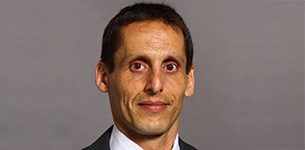Healthcare is embracing the ‘it takes a team’ mentality and is navigating away from siloed care. However, maturing past disparate care will be impossible without our technology systems following suit. The need for critical patient information to flow easily – and unobtrusively – has made it common practice for a single electronic health record system (EHR) to act as a key element of hospital operations and have a presence in each department. Just as hospitals have built these connected infrastructures for patient records, we will see the same happen for managing imaging and diagnostic data across healthcare’s ecosystems. All stakeholders, from the C-suite to the individual radiologist or pathologist, increasingly recognize the need for a central hub of all imaging and diagnostic components that can easily communicate with the EHR to improve efficiency and productivity. By pursuing a strong enterprise imaging strategy, healthcare organizations can future-proof their operations and advance their ability to build a holistic patient picture and streamline care delivery.
By pursuing a strong enterprise imaging strategy, healthcare organizations can future-proof their operations and advance their ability to build a holistic patient picture and streamline care delivery.
Elad Benjamin
Business Category Leader Radiology Informatics
Today’s disparate landscape
Today more than ever, diagnostics play a central role in the patient’s healthcare journey. Oftentimes, imaging and/or labs are the first stop in care delivery, with nearly every specialty relying on them in some way. There are also mounting expectations from patients, clinicians in other departments, administrators and executives to work more efficiently and seamlessly. The outcomes-based environment that healthcare organizations now operate under in the age of value-based care means services and results are expected to be delivered faster, cheaper, for more patients and with higher accuracy. While this is well-intentioned and designed with the goal of improving patient outcomes, it is made increasingly difficult by our still disparate landscape. In many hospitals, each department’s imaging system – such as oncology, cardiology or neurology – operates on separate islands. Needless to say, a patient’s journey can often take them through more than one of these islands, and their data needs to seamlessly travel with them to give each a comprehensive understanding of where a patient has been and where they need to go. Instead, the result today is often duplicate or incomplete diagnostic data, hurting productivity, wasting resources and impacting timely care for patients whose lives could depend on it. Beyond the impact that a lack of data synchronization can have on patient care, we also must consider what this means for the staff experience. Time spent dissecting data to fulfill administrative reporting tasks means less meaningful time with patients and a higher risk of burnout. 45% of radiologists report feeling burnt out, much of which is attributed to the overwhelming amount of bureaucratic tasks. When our lack of data integration is impacting both patient care and the happiness of our staff, it is time to find a solution to enhance visualization and streamline processes.
The power of one
The pursuit of an enterprise imaging strategy is driven by growing volumes of imaging data, as well as the desire to make the transmission, storage, display and analysis of the many types of data easier and more effective. Organization leaders look to the workflow benefits of having one EHR-of-record and are working to similarly unite diagnostic data through one centralized platform to activate the connectivity and integration needed for quality patient care. This push for consolidation largely comes from the CIO, who often oversees dozens of different vendors. They can recognize the data siloes between each system, and can easily spot the cost efficiency and productivity opportunities that come with data aggregation. From the physician perspective, an enterprise imaging solution transforms the way they work. With access to one integrated solution, clinicians can access a unified view of a patient’s condition on one screen, even if a patient presents with multiple different scans or multi-dimensional data. Removing data siloes and democratizing innovative imaging visualization helps to enhance clinical collaboration across departments, and advanced analytics can help translate this information into actionable insights. By reducing non-clinical work such as data duplication issues or time spent tracking down missing information, clinicians can get back to the patient care work that made them enter the field in the first place. Patients also reap the benefits of a solution that offers comprehensive visualization, as clinicians can gain access to a new understanding of diagnosis and treatment options and be more confident about their chosen treatment plan. Looking ahead, if we manage to fully integrate a diagnostic enterprise solution that connects all diagnostic domains and can speak to a system integrated across all others, discussions of interoperability will be a thing of the past. Healthcare organizations will realize strong operational returns, with less wasted resources and lag time, advancing its competitive advantage. When we strip away data barriers, the level of knowledge care teams will have will be significantly more than what they have access to today, consistently giving care providers the right information at the right time.
Share on social media
Topics
Author

Elad Benjamin
Business Category Leader Radiology Informatics, Royal Philips Elad Benjamin is a 22-year veteran of the healthcare industry, with deep experience in Radiology Informatics and Imaging. Before joining Phillips, Elad was the co-founder and CEO of Zebra Medical Vision, one of the pioneering companies of AI and Deep Learning in radiology. Prior to Zebra Elad was Vice President and GM at Lumenis – a medical device company, where he helped take the company public. Before Lumenis, Elad served as General Manager of the Healthcare Information Solutions group at Carestream, leading the group to some of the largest radiology informatics successes and implementations globally. Elad holds an MBA from the Stanford Graduate School of Business and a BsC in Science from Tel Aviv University.
Follow me on













